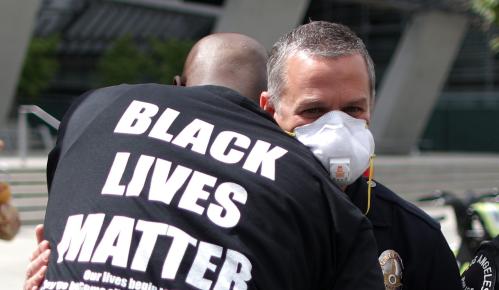American public safety has a human resources problem, with devastating human rights consequences. Perhaps surprisingly, at least 80% of 911 calls for service, arrests, and prosecutions concern petty behaviors, often related to mental illness and poverty, that our society criminalizes as misdemeanors. Typical examples include having an emotional crisis or sleeping in public. But whenever citizens call 911, no matter the conduct at issue, municipalities dispatch only armed officers trained in forcible interventions. Accordingly, year after year, people routinely and unnecessarily die or suffer injury during encounters with police.
In the wake of officer-involved deaths or injuries, outrage and demands for more police accountability often follow. Usefully, some officers now wear body cameras. Additionally, in response to 2020’s historic protests against policy brutality, legislatures are working to pass reasonable laws making it easier to sue and fire “bad apple” officers. Such accountability reforms, however, have not and will not end the epidemic of unnecessary police use of force. Why? Because the job of police is to forcibly intervene, but forcible intervention is unnecessary in the majority of cases to which police respond. In other words, police officers—no matter how accountable or well-meaning—are simply not the appropriate public safety personnel to assist the majority of citizens they serve.
Fortunately, there is an achievable solution: diversify public safety services. Healthcare institutions, for example, assign cardiologists and oncologists to treat citizens with heart problems and cancers, respectively. Similarly, we should create tailored public safety services that would, for instance, dispatch a counselor to assist the family of an intellectually disabled child in crisis, or a community caretaker to aid restaurant workers in ushering a sleeping person off the premises. If such services existed, Linden Cameron, an autistic adolescent, may have been soothed, not shot; and his mom, who called 911 desiring de-escalation, may have felt supported, not shattered. Likewise, Rayshard Brooks may have been kindly prompted to leave Wendy’s, not killed; and the Wendy’s worker, who called 911 desiring peaceable assistance, may have felt helped, not heartbroken. Moreover, the officers involved would not have the traumatic experiences, associated with severe psychological harm, of maiming Linden or killing Rayshard.
Offering citizens a variety of public safety services would reduce unnecessary citizen-police encounters, and thereby reduce officer-involved deaths and injuries. Additionally, it would connect people with practitioners specifically trained to aid in problems they may be experiencing. But the benefits would extend even further. Recall, at least 80% of arrests and prosecutions concern petty behaviors, often related to poverty and mental illness, that our society criminalizes as misdemeanors. Accordingly, primarily assigning public safety practitioners other than police to respond to these behaviors would also greatly reduce unnecessary—and highly costly—arrests, prosecutions, and incarcerations. In turn, such reductions would provide police, lawyers, and judges with the sorely needed time to focus on the remaining minority of more serious incidents. Free from crushing caseloads, armed officers (if truly necessary) could deploy with calm and calculation, lawyers could assiduously adjudicate factual innocence or guilt, and judges or other arbiters, like victim-service programs, could imaginatively craft humane and restorative accountability mechanisms.
How do we actually go about diversifying public safety services? First, we must understand that there is no sweeping federal fix. Our country does not have a public safety system. Rather, it has approximately 3,100 public safety systems representing every county and county equivalent. We must primarily do this work, therefore, on the state and county levels. Here’s how:
- Step one: state and county legislators and activists should ask policed communities—which are largely communities affected by poverty and disproportionately black communities—what public safety services, other than police, they desire;
- Step two: state legislatures and county and city councils should fund the public safety services that their impacted constituents want.
Relying on armed officers trained in forcible intervention to respond to petty behaviors, often related to mental illness and poverty, is inhumane, inefficient, and ineffective. Creating a diversity of community-envisioned public safety services will save lives, money, and time. If we aspire to achieve liberty and justice for all, we must not wait another day to enact this win-win solution to our public safety problem.
Brandon P. Ruben is an Assistant Public Defender for the Maryland Office of the Public Defender in Prince George’s County
The Brookings Institution is committed to quality, independence, and impact.
We are supported by a diverse array of funders. In line with our values and policies, each Brookings publication represents the sole views of its author(s).








Commentary
Police accountability reform is insufficient. To save lives, money, and time, states must diversify public safety services.
December 10, 2020